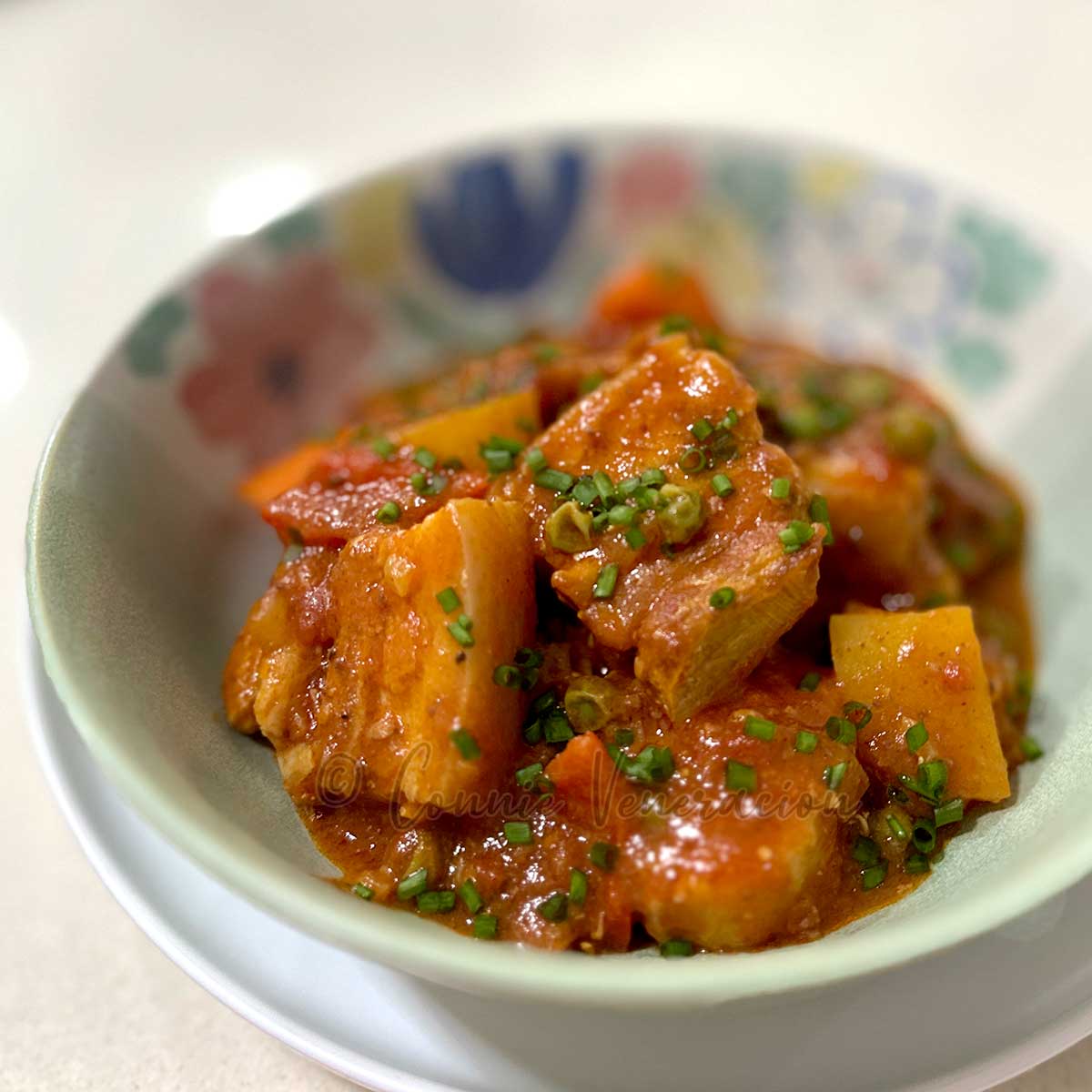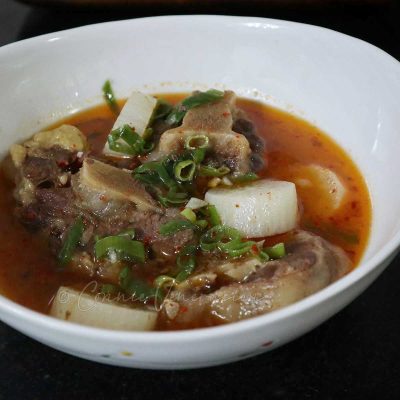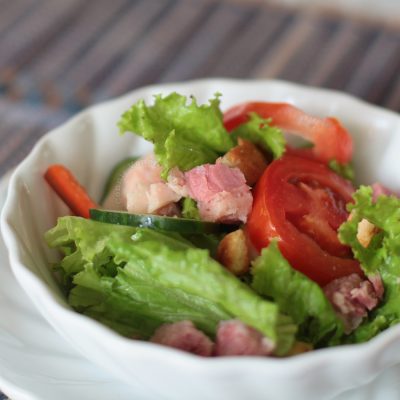A meat stew in this heat? Why not? We don’t really observe the practice of serving “summer dishes” and “winter dishes” depending on the time of the year. We pretty much cook eat what we fancy regardless (please, there is no such word as irregardless) of the season.
That’s mostly because, unlike fruits which can be seasonal, vegetables are not. The same vegetables grow in the hot and cooler months. The only real difference is that, during the monsoon season, vegetables are pricier because strong typhoons often ruin agricultural crops, and that can lead to shortages.
So, okay, we eat stews when the sun is shining with such a blinding blaze, and also when it’s pouring and toads sing in choruses when the rain stops.
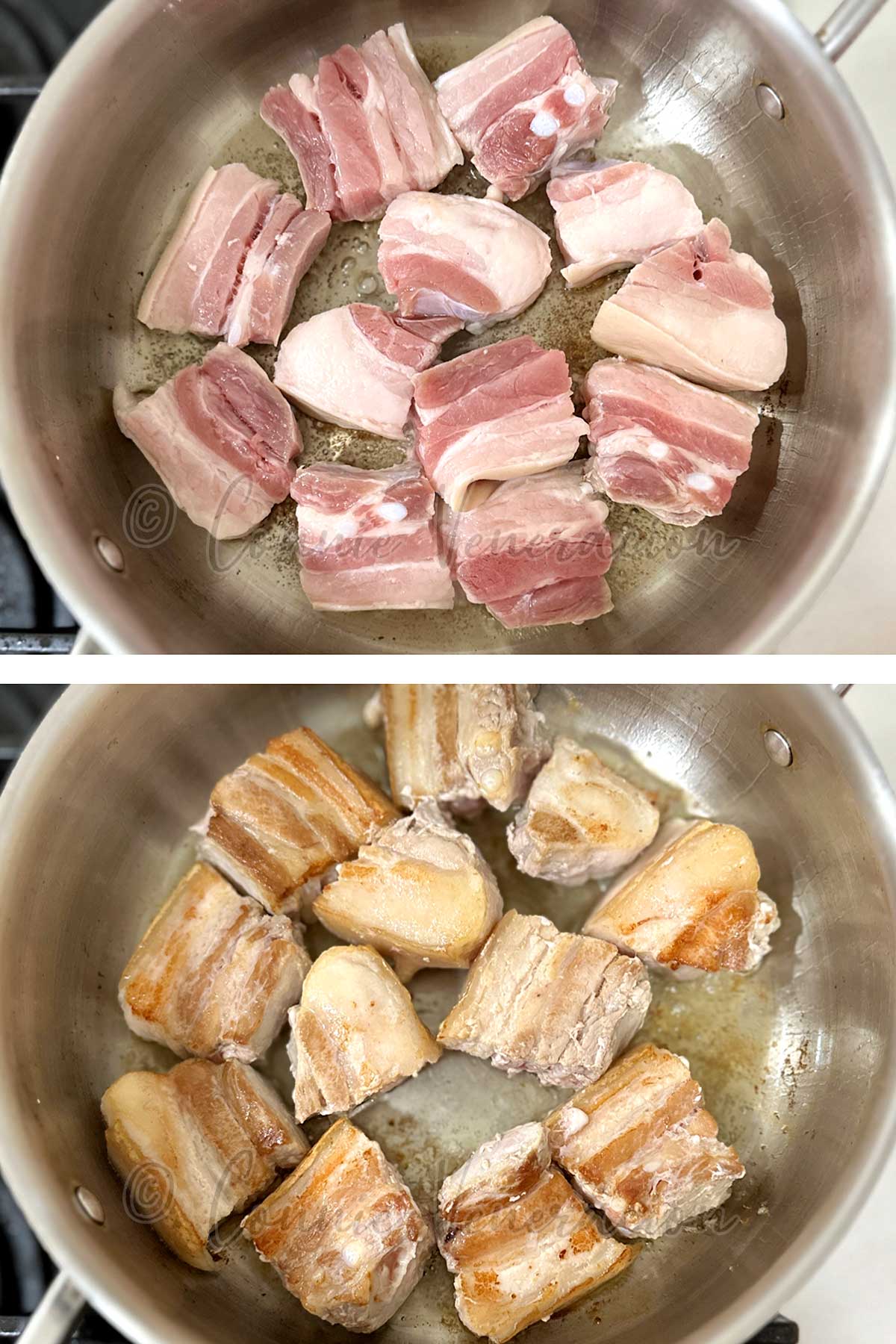
To cook pork belly kaldereta, start by cutting a slab of pork belly into cubes and tossing the cubes with a tablespoon of salt.
Choose a wide thick-bottomed pan, set it on the stove, and make sure the bottom is hot before you pour in your olive oil (heating the pan before adding oil prevents the meat from sticking to the metal). Spread the pork cubes in a single layer in the hot oil and brown all sides.
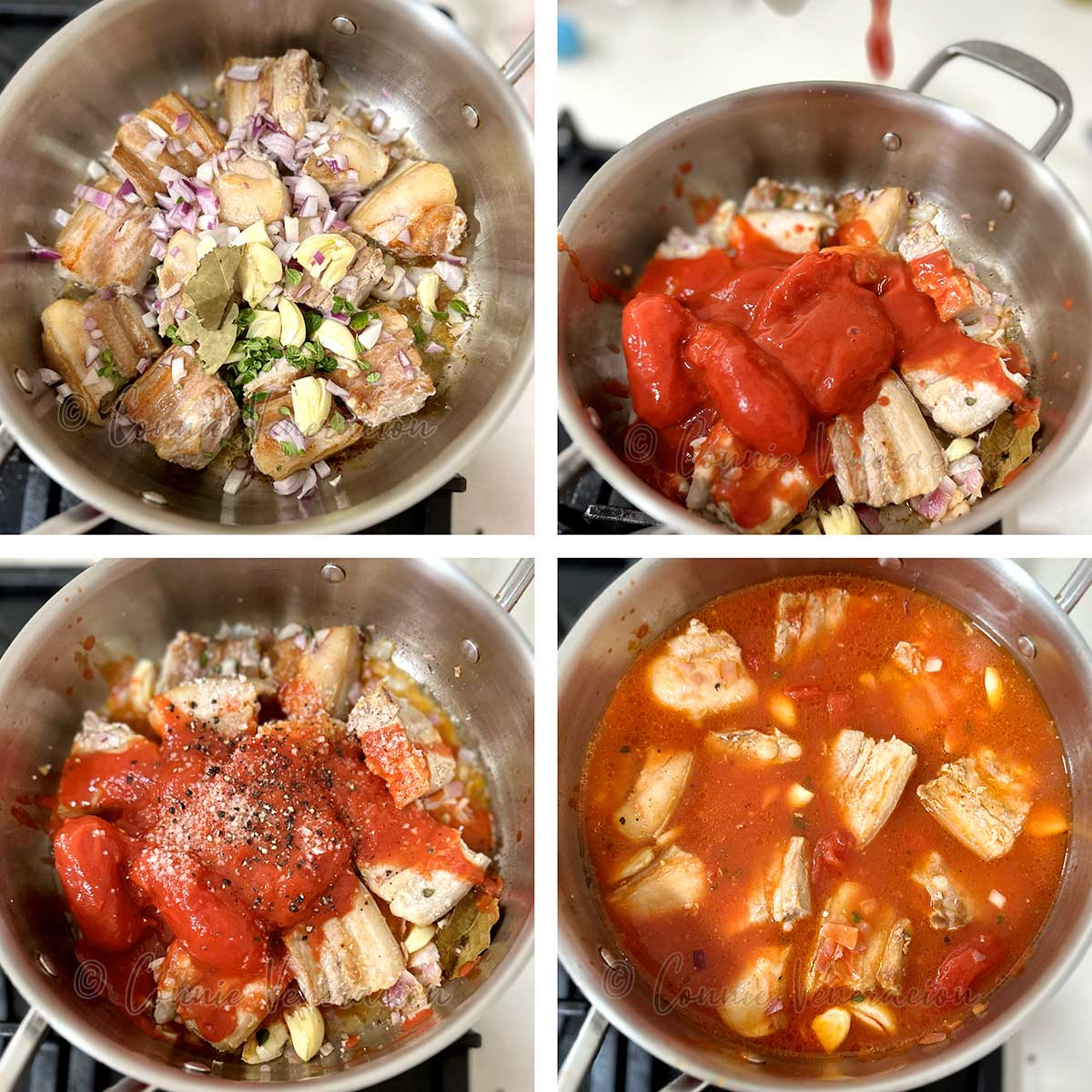
To the browned pork, add chopped shallots, crushed garlic, oregano and bay leaves. Cook everything together with plenty of stirring until you can smell the herbs and spices that you added.
Add a can of tomatoes. I used whole peeled tomatoes but you can use diced tomatoes. Sprinkle in salt and pepper, then pour in about a cup of meat broth. The pork will take over an hour to stew so you don’t want the liquid to dry up during that time. Don’t add too much broth though in the beginning because you don’t want to end up with a soupy kaldereta either. Instead, if the liquid should dry up before the pork is tender, add more broth, about a quarter cup at a time.
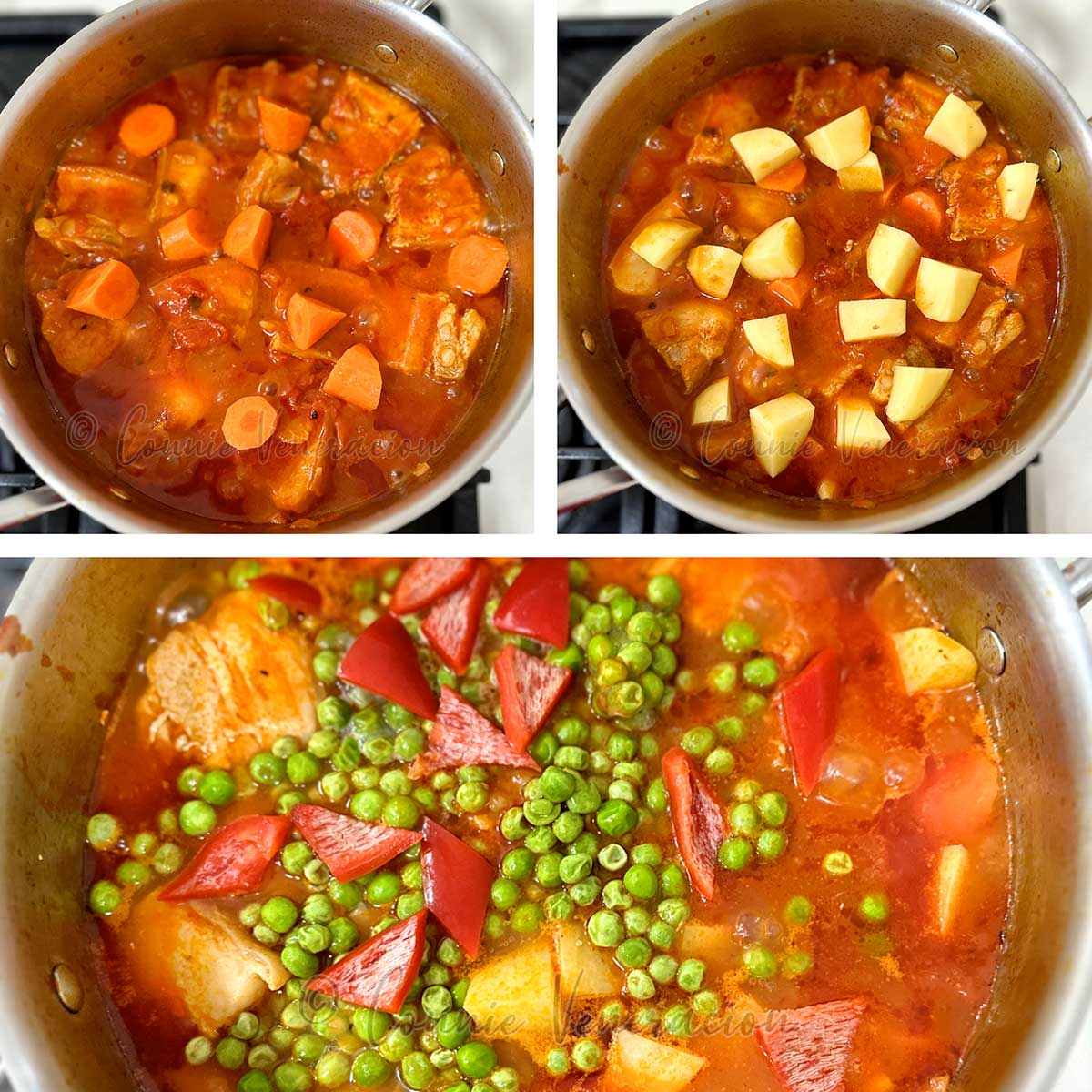
When the pork is cooked, start adding the vegetables. Carrot takes longest to cook so that goes in first. After five minutes, the potato. After another five minutes, the peas and bell peppers.
Taste the sauce after each addition, and add more salt or pepper, or both. The carrot and potato will soak up a lot of the salt in the sauce, so, you’ll need to adjust the seasonings.
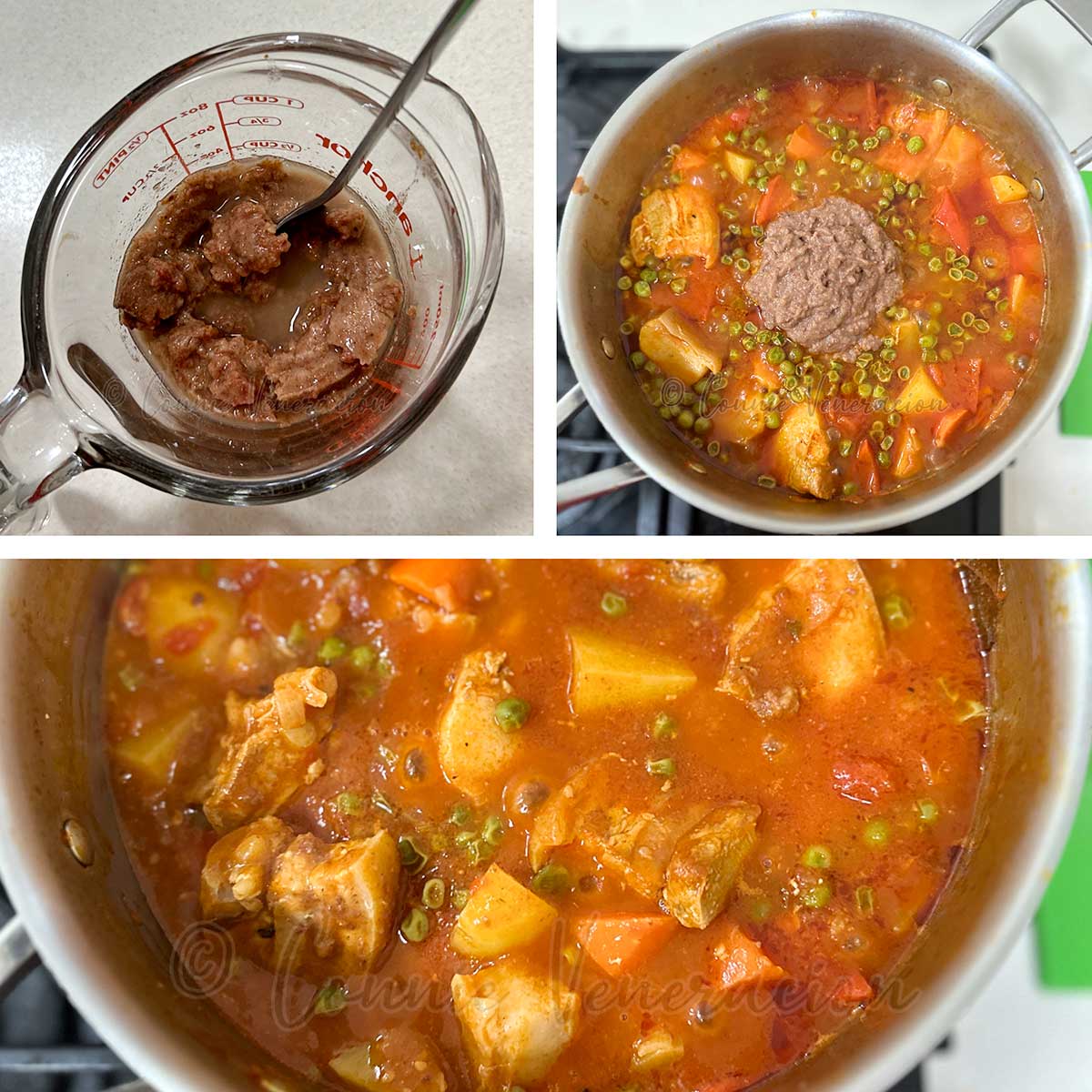
The last ingredient that kaldereta needs is liver pate. Canned liver spread is okay so long as it isn’t mostly starch. Dump the liver pate into a small bowl, dilute with a few tablespoons of broth and mix well until pourable.
Add the diluted liver pate to the stew, stir in to blend, and leave to simmer for another five minutes. Taste your kaldereta, adjust the seasonings one last time, if needed, and you’re ready to enjoy it with rice.
Pork belly kaldereta
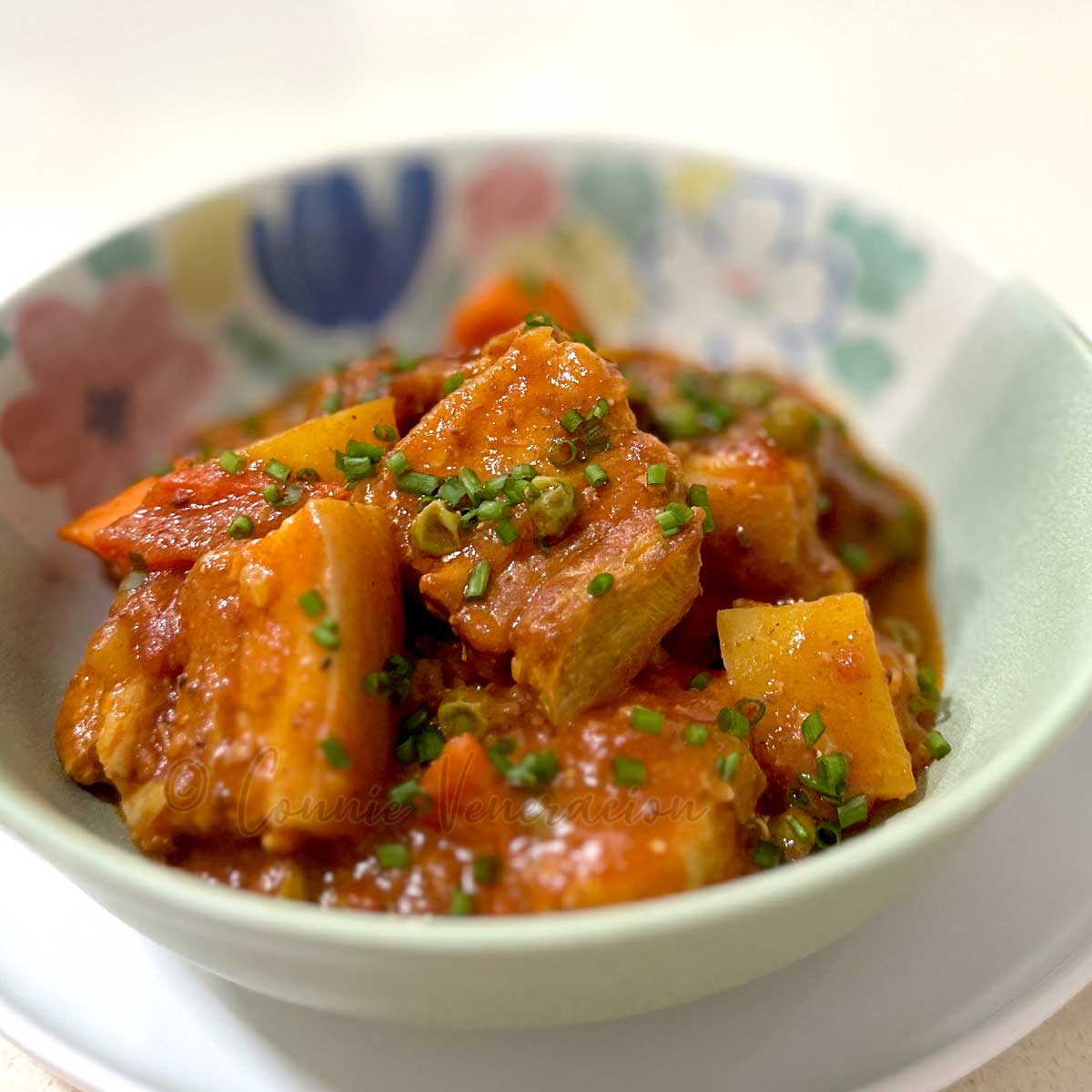
Ingredients
- 700 grams boneless pork belly cut into two-inch cubes
- rock salt
- ¼ cup olive oil not extra virgin
- 2 shallots peeled and chopped
- 8 cloves garlic peeled and crushed
- 2 sprigs oregano leaves only (or half teaspoon dried)
- 2 bay leaves
- ground black pepper
- 1 400 gram can whole peeled tomatoes or diced tomatoes
- 1½ to 2½ cups broth chicken or pork broth will work
- 1 medium carrot peeled and cut into wedges
- 1 large potato peeled and cut into wedges
- ½ cup frozen sweet peas thawed
- 1 to 2 bell peppers deseeded and diced
- 1 can liver pate
- sliced scallions to garnish (optional)
Instructions
- Rub the pork belly subed with a tablespoon of rock salt.
- Heat the olive oil in a pan.
- Spread the pork belly cubes in the oil, leave for the undersides to brown then turn to brown all sides.
- Add the shallots, garlic, oregano and bay leaves.
- Cook, stirring, until aromatic.
- Pour in the tomatoes.
- Sprinkle in another tablespoon of rock salt, and half teaspoon of ground black pepper.
- Stir in a cup of broth and bring to the boil.
- Lower the heat, cover the pan and simmer the pork until tender, adding more broth, a quarter cup at a time, if needed.
- Stir in the carrot wedges and continue simmering for five minutes.
- Add the potato wedges, simmer for another five minutes, then stir in the peas and bell peppers.
- Mix the liver pate with about two tablespoons of broth, stir into the pan with the pork and vegetables, and simmer for another five minutes.
- Taste, adjust the seasonings, if needed, before serving.

